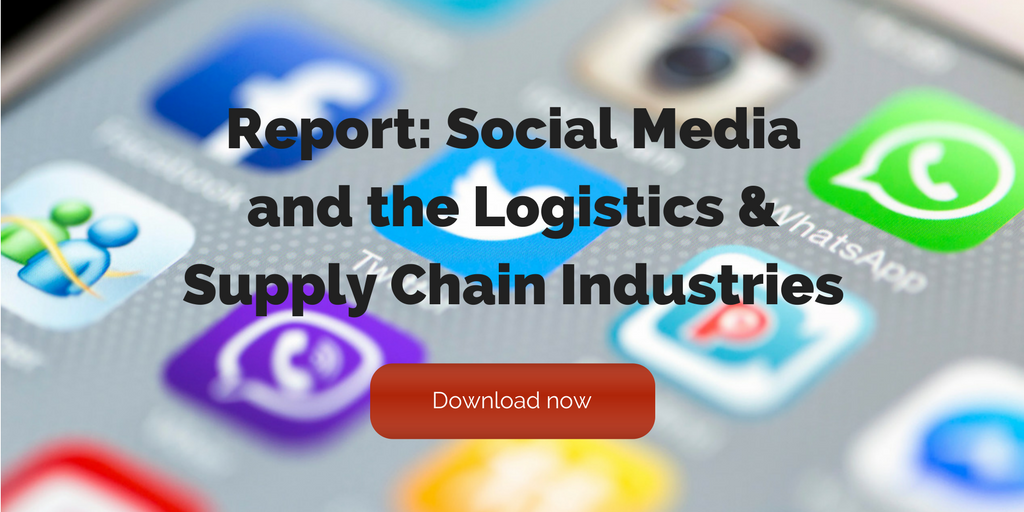
by Fronetics | May 14, 2018 | Blog, Content Marketing, Logistics, Marketing, Strategy, Supply Chain
Here are 4 ideas for measuring podcast success, including downloads, audience, lead tracking, and intangible benefits.
Podcasts are an increasingly popular content medium, but measuring their performance is difficult. Here are some tips for measuring podcast success in spite of the challenges. Spoiler alert: it’s an art, not a science.
Why podcasts?
Today’s busy professionals are increasingly driven to make their “down time” more productive and engaged. The popularity of podcasts rises every year, with more than 50% of American homes now classified as “podcast fans” by Nielsen.
[bctt tweet=”Podcasts are essentially blogs in audio format, and — like blogs — they are relatively cheap to produce, making them an excellent high-value offer.” username=”Fronetics”]
Podcasts are easily downloadable on a phone or mobile device. They allow the user to listen to a topic of interest while commuting, exercising, or cleaning the house. Podcasts are essentially blogs in audio format, and — like blogs — they are relatively cheap to produce, making them an excellent high-value offer with which to generate or nurture leads.
If you’re already creating podcasts as part of your content program, good for you! But, you’re probably running into a familiar challenge: It’s really hard to measure podcast performance.
4 tips for measuring podcast success
ROI calculations for podcasts are notoriously elusive because users download them on their devices. Producers won’t know whether a user ever listened to any or all of a particular podcast.
But measuring podcast success is possible, at least for those that don’t mind a little more nuance than numbers. Here are 4 tips to get you started.
1) Track unique downloads
With podcasting, the best measurement is something called a “unique download,” which tries to capture how podcasts are generally obtained. It measures a progressively downloaded file by a single user at a single IP address over a 24-hour period. Third-party tracking services like PodTrac or tracking/hosting services like Libsyn or Podbean can give you this information.
Is this perfect? Nope! Users can download and never listen or download and only partially listen. Multiple users can listen to one download, and one user can download twice (or more) onto multiple devices. There is nothing exact about tracking the number of unique downloads. But based on the way podcasts are consumed, it’s not a bad metric, and frankly, it’s all we’ve got.
2) Estimate your base audience
Determining the approximate size of your subscriber list — or at least your committed and consistent listening audience — is also helpful. This isn’t exactly the same as unique downloads. Subscribers are people that have gone out of their way to make sure to be alerted when you publish a new podcast.
To do this, examine two trends: the consistency in unique downloads across multiple episodes and, more importantly, the number of downloads in the first 48 hours after a new release. Those first few days are when your consistent listeners will grab the industry-fresh (you hope!) info, and it will give you sense of how big that segment is.
These subscribers are your bread and butter. And you can use this number, albeit approximate, as you would other marketing metrics that measure engagement.
3) Get creative (without getting annoying)
If getting a better sense of lead generation from your podcasts is imperative, try thinking creatively about how to access that information from your audience. But beware! The more you require of your listeners, the more annoying you potentially become. That said, here are some ideas.
- Create a page/section on your website where visitors can access the podcast. If you’re using a marketing software like HubSpot, you’ll be able to tell if leads access this via your site.
- Add an optional question on the lead-generation forms on your website, just a simple checkbox like, “Have you heard our podcasts?”
- Check the previous page path from your homepage on Google Analytics or your referrals sites report from software platforms like HubSpot for traffic coming from podcast websites.
- Create a special landing page and mention it as a call-to-action in your podcast several times. This way, you know any traffic visiting this page must have come through the podcast.
All these can offer a rough (but low) estimate of leads that have consumed podcast content.
4) Remember the value of intangibles
Here’s the part where we remind you how important it is to remember why you are podcasting. Lead generation? Of course. But why else? We’d venture to say building relationships, like all of your content marketing. Podcasts are wonderful for this!
Invite your current customers or best business relationships to join you for a podcast. There’s a lot of power in a really good interview on a podcast: You get some fresh and new content; you deepen a potentially very useful business relationship; and you gain their network of listeners, too.
Learn from the inconsistent
Patterns and consistency can give a broad sense of the success of your podcasting. But don’t forget to abandon them sometimes, particularly if there is one podcast that’s an outlier.
If one was wildly successful, that’s fantastic. Chances are you hit on an extremely timely topic, or perhaps did something better in your efforts to share outside of your base subscriber list. Great news for your lead-generation efforts!
That said, if you have one or two that garnered lower interest, don’t assume the opposite is true. And don’t let them skew your broader analysis. Sometimes it only has to do with how niche your topic was, and niche topics can still be highly successful lead-generation tools, particularly if yours is a niche business with niche clients. In fact, these niche podcasts may end up being some of your most successful.
Related posts:


by Fronetics | May 10, 2018 | Blog, Content Marketing, Logistics, Marketing, Supply Chain
An important part of your content strategy should be optimizing historic blog content to ensure it’s attracting as much traffic as possible.
We all know that creating original content on a regular basis is important to improving SEO and attracting organic traffic to your website. But, here’s a surprise: Most of your traffic will come from older blog posts.
An important part of your content strategy should be optimizing historic blog content to ensure it’s attracting as much traffic as possible.
If you have a lot of content, that may scare you. (Sounds like a lot of work!) But, as with everything, being strategic about optimizing historic blog content will pay off many times over. Here’s how I suggest going about that.
Pick your posts
At Fronetics, about 80% of our traffic comes from posts that are 6 months old or older. HubSpot also discovered a similar trend: 76% of its monthly views came from old posts, as well as 92% of the company’s monthly leads!
[bctt tweet=”76% of HubSpot’s monthly views come from old posts and 92% of their monthly leads.” username=”Fronetics”]
But not all posts were created equal. In fact, HubSpot found they got about half of their monthly leads from only 30 posts, and they blog at a blistering pace of about 200 new posts every month. Going back and optimizing hundreds of your old posts is a waste of time.
Hunt through your analytics and look for historical blog posts with:
- High traffic and high conversion rates: Readers view these posts often and convert frequently after reading them. Found any of these? Congrats. Most companies won’t have more than 1 or 2.
- High traffic but low conversation rates: These are the posts are viewed often but don’t generate leads.
- Low traffic but high conversion rates: These posts only garner a small number of hits but do well generating leads due to a higher-than-normal number of call-to-action click-throughs.
All set? Have a list of good blogs to work with? Here comes the fun part!
5 tips for optimizing historic blog content
Here are 5 tips to squeeze the absolute most out of your older blog posts (in terms of leads and conversions).
1. Update the content.
Rework it for today. Take out anything outdated and use a little finesse to make it more relevant. Don’t overhaul it; that’s unnecessary for a well-performing post.
2. Spice up the call-to-actions.
You’ll want to pay special attention to this for the posts that have high traffic but low conversion rates. CTAs have evolved. Old ones just aren’t going to appeal.
Revamp the CTA placement and appearance, and think (hard) again about your CTA content. Consider the language of the CTA and whether it fits the reader’s goal. What keyword(s) are they using to find the page? And does the CTA reflect this?
There’s so much information out there on making strong CTAs, but the bottom line is the CTA must match the intent of the audience.
Keep it bold. Keep it clear. And make ‘em an offer they can’t refuse.
3. Relook at your keywords.
For the posts that do well converting leads but don’t get a lot of traffic, you’ll need to take a fresh look at keywords.
Trying to rank for certain keywords in each blog post you publish is a practice on the way out. But it still has merit here, as long as you understand it within the larger picture of restructuring your website content into topic clusters and pillar content.
People are changing how they search, and search-engine-optimizing these old posts to get more visibility is the goal.
And here’s the beauty of optimizing historical blog content: You already have the data to know which keywords your audience are using to find the posts. Then prominently feature the keyword(s) in several places.
4. Update your posts’ meta descriptions.
If you’ve done the hard work to update the CTA and the keywords, updating the meta description is a natural next step. Keep it as close to (but not over) 155-165 characters. Include your keyword(s). Explain the value of the post to the reader. And keep in mind your ultimate CTA goal. Everything should align to make the meta description a true synthesis of the post; if it doesn’t, go back and tweak a little more.
5. Republish and keep the URL.
Things that are “fresh” receive preferential treatment from Google. (We know it’s hard to believe when 2012 articles are at the top of your search results, but it’s true.)
But do not lose that original URL when you publish again. It pulls way more SEO “rank” than a new one. Keep the URL even if you updated the title of the post and the URL doesn’t match perfectly anymore. It’s OK.
(It’s not a bad idea to put in an editor’s note at the end of the article if the blog already has garnered comments, so your future audience won’t be confused by a publish date that is later than the date on the comments.)
And that’s it. 30 days after optimizing your historic blog content, go back and see how successful your efforts were. Track the metrics: post views, CTA click-throughs, lead generation, and keyword ranking. We’re betting they’ve gone up.
Measuring the success of your SEO strategy shouldn’t be done by measuring the success of one post at a time. But making the most of your best old posts is an important part of any good content marketing strategy.
Final tip
The final tip isn’t really about optimizing historic blog content, so let’s call it a ½ tip. Remember how Tip 1 recommended reworking the old posts but warned against overhauling them with large rewrites?
Well… Here’s the thing. If you have 12 historic blog posts you just optimized, you should write 12 new blog posts on that same content, too.
Recycle that good historic content into additional fresh content. After all, it’s what your audience is searching for!
Related posts:


by Fronetics | Apr 4, 2018 | Blog, Content Marketing, Logistics, Marketing, Supply Chain
Integrating marketing automation into your CRM strategy can improve efficiency, streamline workflows, and make communications more consistent.
Over the past few weeks, we’ve been talking about different types of marketing automation, why you should be considering them, and what they can do for your business. Today, we’re talking about customer relationship management (CRM) — an area where you may not have realized that automation could help. Integrating marketing automation into your CRM strategy can improve efficiency, streamline workflows, and make communications more consistent.
So how does integration of CRM and automation look?
Pardot blogger Jenna Hanington explains it like this: “Automation … is the marketing counterpart to your CRM, focused on lead generation and personalized, one-to-one communications powered by the data collected through prospect and visitor tracking.”
Your CRM is a database, and marketing automation is “the tool that allows you to execute on the information stored in that database,” writes Hanington. Integrating the systems has the potential to cut costs and make big gains in terms of productivity. According to Salesforce blogger Matt Wesson, “Marketing automation and [CRM] are complementary tools that only reach their full potential when paired together.”
Combining CRM with marketing automation has the potential to give you more organizational bandwidth, more precision in your messaging and lead nurturing, and more measurable value in your campaigns. Here are a few examples of how CRM and marketing automation can work in tandem.
3 ways your CRM and marketing automation can work together
1) Track behavior
Combining automation with your CRM allows you to go beyond basic demographic data. You can see things like what pages your prospects are visiting, what types of content they’re interested in, and where they are in the buying cycle.
2) Tie revenue to campaigns
Marketing professionals often run into the problem of not being able to specifically tie their efforts to ROI. Creating a campaign in your marketing automation system maps it back to your CRM, so you can correlate closed deals directly with the campaigns that created them. This means you can attribute revenue directly to campaigns and more accurately measure your ROI.
3) Send targeted messages
You can use the behavioral information collected by your marketing automation tool to create and send targeted messages that are customized to your prospects’ interests and stages in the buying cycle. This means your prospects will find your messages more relevant and engaging.
In summary, integrating marketing automation with your customer relationship management database can save you time, make sales and marketing more effective, and better track ROI. This one is a no-brainer.
Related posts:


by Fronetics | Nov 7, 2017 | Blog, Content Marketing, Data/Analytics, Marketing, Social Media
Use these four steps to determine which social media KPIs your business should be tracking to ensure you’re meeting your content marketing goals.
Whenever we create content marketing strategies for clients, we always tailor them to align with their specific business goals. So, for example, if a client is interested in getting more leads, we implement a plan designed to convert website visitors into contacts. And, equally importantly, we make sure lead generation is a metric we are constantly measuring.
Social media management is usually an important part of a comprehensive content marketing program. So, too, do we create a social media strategy specifically tailored to a client’s content goals. And this begins with establishing the right social media KPIs (key performance indicators) for those goals.
I wish I could give you a list of metrics that would work for every business. But, of course, it doesn’t work that way. Depending on what you’re looking to accomplish with your marketing plan, you’ll want to strategize, execute, and measure progress accordingly.
To get you started, here are four steps to help you decide which social media KPIs to measure based on your specific content marketing goals.
4 steps to determining your social media KPIs
1) Understand the difference between metrics and KPIs.
According to social media strategist and author of Going Social and Getting to Like Jeremy Goldman, “It’s completely normal to get metrics and KPIs mixed up to some extent.” Metrics, he says, “are simply measurements quantified,” while KPIs are “metrics that you’ve determined are mission critical to your business.”
Why is this distinction important? While we can measure more than ever before, sometimes too many measurements lead to a loss of organizational focus. In fact, Goldman suggests defining relatively few KPIs in order to maintain focus. “The more KPIs your organization has defined, the less focused it likely is.”
2) Define your business’ specific social media marketing goals.
In order to figure out the most relevant performance indicators, you need to establish and document a set of goals for your social media presence. Once you’ve done that, you can select metrics that help you analyze your progress.
For example, if you’re trying to get as many views as possible on your company’s white paper, your best KPIs are probably going to be visits to the lead-gen form connected to the white paper, as well as the total number of white paper downloads.
3) Start with the basics.
What is your organization’s mission statement; what is its reason for being? “It may sound like a lofty place to start,” says Goldman, “but you can’t succeed without an understanding of the firm and where it’s looking to go.”
Once you’ve got a clear idea of your brand and your company’s mission, make sure you have an understanding of your role within the context of the larger organization. Having an understanding of these basics gives you tools to focus on what serves the whole.
4) Survey your metrics.
Take a close look at all the metrics available to you, making sure not to assume everything is important. By the same token, don’t discount a metric that might not seem at face value to be important — be as objective as possible.
Next, you can determine your KPIs. “Break down your list of metrics and pick a few you’re determined to work night and day to measure your success by,” suggests Goldman.
Related posts:


by Fronetics | Sep 11, 2017 | Blog, Content Marketing, Marketing, Social Media, Strategy
Social prospecting can help logistics and supply chain companies identify and engage with leads on social media in a genuine — and highly effective — way.
Social media should be an integral part of your marketing strategy. You know it helps build brand awareness, gather market intelligence, discover customer problems, and influence purchasing decisions. But your lead generation efforts should also include the use of social platforms. It’s a practice called social prospecting, which can be highly effective in identifying new prospects.
What is social prospecting?
With more than 2 billion monthly active users on Facebook and over 328 million monthly active users on Twitter, smart marketers know there’s more potential than ever to use social platforms to get their name out there, spread their content, and draw more people to their site. Hey, it’s your job to make people aware of what your company can offer, right? Right.
That’s where social prospecting comes in. It involves scouring the social web, identifying potential prospects for your business, engaging them with content, and getting those potential prospects to your sales team. “Social prospecting is the art of listening to people, not mentions or keywords,” writes Maggie Hibma for HubSpot.
Social media isn’t just for recreational purposes anymore. More than half (53%) of B2B buyers report using social media to research purchases, in fact. Social prospecting allows you to be proactive in finding all of the considerable number of social-media-using prospects who are looking for you, too.
But as with any initiative, social prospecting requires commitment. In order to find new leads, social prospecting needs to become a part of your daily routine. The end results will be quality leads that are already committed to your brand because of the connection you have created through social channels.
Creating positive impressions
The secret behind successful social prospecting is creating and distributing content that shows that you and your company genuinely care about your clients and prospects. It’s about ditching the ‘sales’ game and working to establish your brand as an industry leader that has a connection to your community and a lot of valuable insight to share.
Make your content about your target consumers: What do they need to know, struggle with, or want to learn more about? By distributing this content across social channels to foster sharing, conversation and engagement, you’ll gain influence with your audience (and their networks) and make a positive impression.
Prospecting vs. spamming
The definition of spam is “indiscriminately.” It means “in a random manner” or “in a way that does not show care or judgment.” This is the opposite of how social prospecting should work. The connection that you create with your prospects should be anything but random.
Think about the number of possible prospects on social media right now. Facebook just topped 2 billion active users monthly, and Instagram is pulling in over 250 million daily active users. These massive numbers scream opportunity — but only if you are putting your time and effort into the right people, on the right channels, at the right time.
Sounds complicated? It doesn’t have to be. If you already have a social media presence, that’s step one.
Fronetics’ recently updated Social Prospecting Workbook guides you through using social listening to generate new leads for your business. We’ve identified the quickest way to find potential customers on Twitter, Facebook, LinkedIn, Pinterest, and Google+. Every worksheet includes:
- Short preparatory work to make the actual prospecting easy
- Visual instructions on how and where to find prospects
- Pro tips that will help you get the best results
- Prescriptions (Marketing Rx) for success
- Take-home exercises for follow-up prospecting
Download it now, and let us know what you think!

Related posts:









